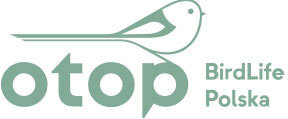Aquatic Warbler feathers will help to discover more wintering grounds

Winter mowing started in Sporava mire this January
30 stycznia 2009Workshop for African Bird Experts took place at the Djoudj National Park
9 marca 2009The Royal Society for the Protection of Birds (RSPB, the BirdLife International Partner in the UK) is pushing forward an important piece of research to support the identification of wintering sites of the Aquatic Warbler in Africa. The analysis of stable isotopes found in the feathers of adult Aquatic Warblers, grown in the African wintering grounds, in the past help to narrow down the search area for the species’ wintering sites to the area between 12 and 20°N.
After the discovery of one major wintering site in and around the Djoudj National Park in Senegal, the analysis of feathers taken from birds at this site and the comparison with feathers from birds caught in the European breeding grounds, is expected to help deciding whether there are other important wintering sites outside Djoudj, and in which direction from Djoudj they would be located.
Under the lead of Paul Donald, conservation scientist at the RSPB, the Aquatic Warbler feathers caught in Djoudj, Senegal in January – February 2007 and 2008 have already been analysed for carbon, nitrogen and hydrogen/deuterium isotopes in a UK laboratory. A sub-sample is currently being analyzed for strontium. Additionally, there are older data from birds caught in Europe during migration or breeding in the years from 1991-2005. The feathers samples obtained during the last expedition of the BirdLife Aquatic Warbler Conservation Team (AWCT) to Senegal in December 2008 – February 2009 will be analysed in the nearest future. Additional data, valuable for comparison, stem from resident African bird species from 2004, 2007, 2008 and 2009.
The data are currently being analysed. They look very interesting, but it is currently difficult to interpret them conclusively because there seems to be considerable inter-annual variation of isotope signatures. The biggest problem is that the data from birds caught in Europe are from different moulting cycles than those caught in Djoudj, making direct comparison impossible. This means, that the AWCT is now urgently looking for additional feathers that could be analysed: They should be from adult birds caught in Europe, either during breeding or migration in the years 2007, 2008 or in the coming breeding and migration period 2009!
In this respect the AWCT kindly asks everybody who has collected or will be collecting feathers from adult birds at the breeding or stopover sites during 2007-2009 to get in contact with Lars Lachmann, Country Programmes Officer at the RSPB, to arrange for the feathers to be sent to the UK for analysis. At the moment, the appropriate amount of funding is available to carry out the analysis quickly.
Also, the AWCT will be grateful for anybody who is planning any ringing of Aquatic Warblers in 2009 for the collection of feathers either from breeding sites as well as during migration (adult birds only).
While no final results are available yet, early indications are that there may be a larger part of the population (maybe at least half) that is moulting outside of Djoudj. Of course, it can still be that birds moult at other sites in the beginning of the winter and concentrate in Djoudj later in the season. However, at this stage nothing is proven yet and further research is required.

The search area for the AW wintering sites.
For more information contact: Lars Lachmann,
Country Programmes Officer, The RSPB
lars.lachmann@rspb.org.uk

